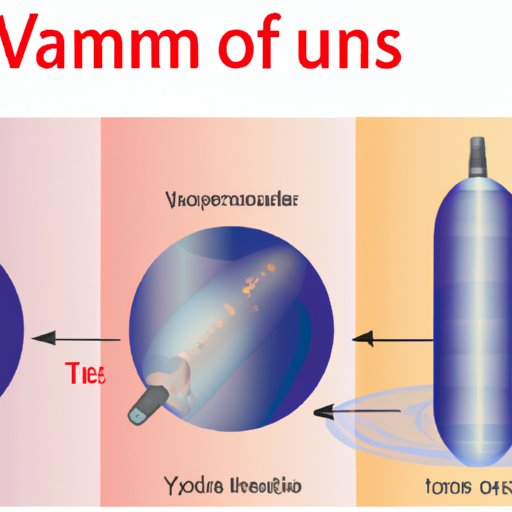Introduction
A vacuum is defined as an environment where there is no matter or particles present; this means that there is no air, which is essential for sound to travel. This article will explore why sound cannot travel in a vacuum, looking at the physics behind why there is no sound transmission and how it compares to other environments.
Exploring the Physics Behind Why Sound Cannot Travel in a Vacuum
To understand why sound cannot travel in a vacuum, it is important to examine the physics behind why air is needed for sound transmission. Sound is created when an object vibrates, producing waves of energy called sound waves. These sound waves need a medium, such as air, to be able to travel; without a medium the sound waves are unable to move from one place to another. In a vacuum, there is no air present and therefore the sound waves have nothing to move through, meaning they are unable to travel.
The relationship between pressure and sound waves is also important to consider. Pressure is the force exerted by a fluid on a surface, and it affects the way sound waves travel. In a vacuum, there is no pressure present and therefore the sound waves cannot move. This is because the sound waves need the pressure of the air to be able to move, and without the pressure they are unable to travel.

Understanding How Sound is Carried Through Different Mediums
Comparing sound transmission in a vacuum versus other environments can help to further understand why sound cannot travel in a vacuum. In other environments, such as air, water, or solid materials, sound waves are able to travel due to the presence of air. Air is needed for sound transmission because it acts as a medium for the sound waves to move through. The air molecules vibrate when the sound waves pass through them, and this vibration carries the sound waves along.
Air is also important for sound transmission because it helps to maintain the pressure of the sound waves. When the sound waves enter the air, the air molecules vibrate and this creates pressure. This pressure is necessary for the sound waves to be able to travel, and without it the sound waves would not be able to move. Without air, there is no pressure and therefore the sound waves cannot travel.
Conclusion
In conclusion, this article has explored why sound cannot travel in a vacuum. It has looked at the physics behind why air is needed for sound transmission, and how the lack of pressure in a vacuum prevents sound waves from travelling. It has also examined how sound is carried through different mediums, showing that air is essential for sound transmission. Further research should be conducted into the physics of sound transmission in different environments, to gain a better understanding of how sound moves through different mediums.
(Note: Is this article not meeting your expectations? Do you have knowledge or insights to share? Unlock new opportunities and expand your reach by joining our authors team. Click Registration to join us and share your expertise with our readers.)
